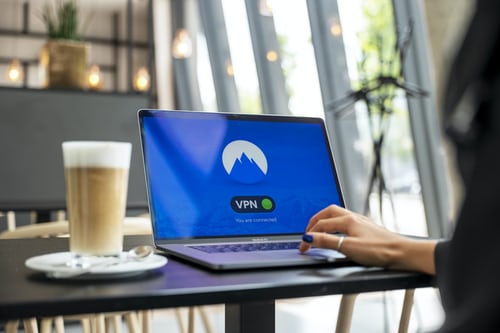The COVID-19 pandemic pushed most firms, large and small, to move to a remote working environment almost overnight. While some companies had the tools and practices in place to make the shift go smoothly, others scrambled to figure out how to give remote employees secure access to company systems, applications, and data. Most people mistakenly believe that a VPN and RDP are the same things. Although both offer remote workers a secure connection to corporate network resources, a VPN and RDP are two quite different options with distinct benefits and drawbacks. Click this link if you are looking for a reliable provider, which works perfectly with RDP and VPN. Having said that, let’s compare and contrast VPN and RDP so you can make an informed decision about which solution is best for your company and provider. Let’s see VPN vs RDP: what’s the difference.
What is a VPN
The term VPN refers to a virtual private network. A VPN, or virtual private network, is essentially a smaller, private network built on top of a larger public network, most commonly the internet. The VPN can be configured in a variety of ways, allowing for more shared access among the devices that are connected to it.
Once you’ve logged into the VPN, you can access programs that are only available on local networks over the internet. Let’s assume you have a unique printer in your office that is connected to your company’s local network, so if you need to print something while out in the field, typically you’ll have to wait until you get back and can connect to the network directly. However, using VPN, you may virtually log in to your office’s local network and print as if you were there. When comparing VPN vs. remote desktop solutions, keep in mind that VPNs only provide access to resources that are already shared on the network. There isn’t a lot of leeways.
You’ll have remote access to shared resources on the VPN, such as printers, servers, and shared folders, once you’ve set them up. However, if you don’t allow the remote access folder before leaving the workplace, you won’t be able to share files with your VPN. Therefore, it needs to be set up to utilize it.
RDP
RDP is short for Remote Desktop Protocol, however, it’s sometimes known as just Remote Desktop. It’s the common name for a series of software that let you connect to computers or devices from afar.
With the rise of distributed workforces and more people working from home on a regular basis, remote desktop solutions are becoming increasingly widespread. It’s ideal for folks who are always on the move, work from home or are regularly in the field and want access to a desktop computer.
Remote desktop, often known as “screen sharing,” allows you to view your desktop computer from any location with an internet connection. When deciding between VPN and remote desktop, this can be advantageous if you don’t anticipate needing access to specific files kept locally.
You can also use RDP, or remote desktop, to run applications, modify administrator settings, and conduct other duties as if you were sitting at your desk. In addition to the resources on the computer or device being controlled, a remote desktop allows you access to shared network resources.
RDP vs. VPN
There are two key considerations when comparing VPN vs remote desktop: Security and Flexibility.
Flexibility: VPN and remote desktop are functionally different concepts, despite some similarities. A virtual private network (VPN) allows you to connect to a network, whereas a remote desktop (or RDP) allows you to control a complete system.
When deciding between VPN and RDP and which is the best option for your business or personal needs, think about what you really need. VPN will not enable you to have complete control over a local computer from a remote place. If you don’t want to have to plan ahead of time and share all of the folders and files you’ll need in the field, RDP should be your choice.
When it comes to flexibility, a remote desktop is better than a VPN because it provides you complete access to your device from wherever you are.
Security: Security must be a major issue as you explore the best technique to allow access remotely to a device or network. You must consider the security weaknesses of your selections whenever you provide your information to an outsider.
Because of the amount of access that remote access connections allow, we suggest using a Virtual Private Network over RDP.
In the end, VPN provides less control than remote desktop solutions, limiting the actions and flexibility required to operate remotely with access to critical files, data, servers, and systems. The convenience and control of a remote desktop with security overtakes a VPN.


